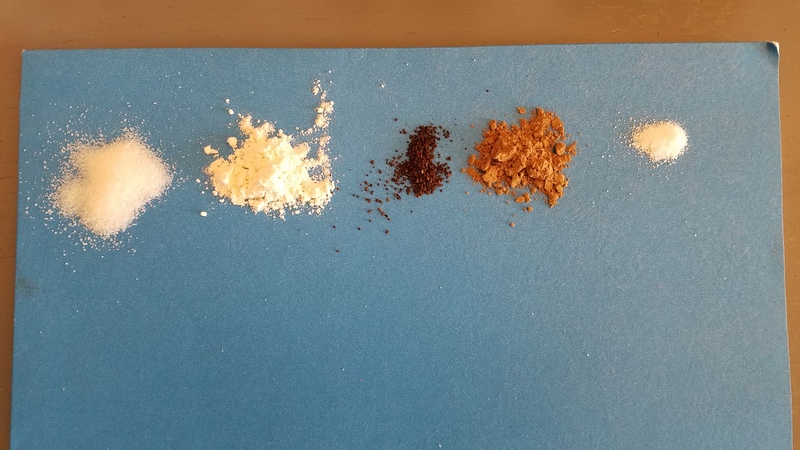There's a group in Wisconsin who have been using the Simple Air Sensor to demo how particulate matter sensors work. I recently heard they've hit a couple learning moments with the tool. Professor Crispin Pierce told me:
"We had been testing with a couple of different types of coffee creamer dust, but when I brought in one sample, it did not change the colored light. It turns out that different brands have different consistencies and thus different PM2.5 emissions. I’ll do this demo on Friday to show that monitoring – not just assumptions about equal emissions from two similar-looking sources of dust (e.g., two different sand samples) – is necessary to determine PM2.5 levels."
I thought this was pretty interesting as a demo activity and did a little testing myself with one of the 2.5 Simple Air Sensors. I used a container to shake up different substances and opened it by the sensor. Check out the video below testing out sugar, flour, coffee, cocoa powder, and splenda.

Not all powders and granules are created equal!
Turns out if you really want a reaction, go for the cocoa powder!
Another time I tried the flour and it turned the light yellow, but this didn't happen each time.
Thanks for sharing this neat activity Professor Pierce and team (@OrionAllgaier and others) !

7 Comments
Wow, this is a really great activity! And great video!!!
Did the cocoa take a while to clear out and return to green?
Is this a question? Click here to post it to the Questions page.
Not too long. Maybe 3-5 seconds
Reply to this comment...
Log in to comment
@warren awards a barnstar to stevie for their awesome contribution!
Reply to this comment...
Log in to comment
I'd love to combine this with a microscope activity to look at each of the powders for scale!
Reply to this comment...
Log in to comment
Hi Stevie, Thanks so much for carrying out these tests. The results seem logical given the particle sizes of the solids you tested (e.g., sugar crystals much larger than cocoa powder) and noting that the sensor is looking for the "fine" PM2.5 particle size range.
We've now used the color-sensor to show audiences the differences between "whole" sand (all particle sizes) and refined "frac" sand (just the larger sizes): the former readily changes the color from green to red (when the power bar is charged) whereas the latter does not.
One fun demonstration we've done is to use cocoa powder which turns the sensor red and can be smelled but not seen by nearby audience members. This demonstrates the need for these kinds of monitors around frac sand mines since particulate emissions can't be seen but can be inhaled.
Reply to this comment...
Log in to comment
I did this with a Lighter and a Public Lab card, thanks to Stevie. Set the Public Lab card on a tiny fire, put it out, let it smoke up the sensor, and the light changes rapidly from green to red.
you can show the air clearing in about 1-2 min, while you describe the parts.
Stevie put two of these units in a box for me, and i got three requests for meetings in three pitches. go stevie. two units is interesting, too, showing some variability, but overall the same pattern. Science!
OMG this is the best, Scott :-)
Hey i'll be in NOLA next friday for a week!
--
ig: @unterbahn | he/him/his
On Thu, Jan 30, 2020 at 5:10 PM \<notifications@publiclab.org> wrote:
Is this a question? Click here to post it to the Questions page.
Reply to this comment...
Log in to comment
Login to comment.